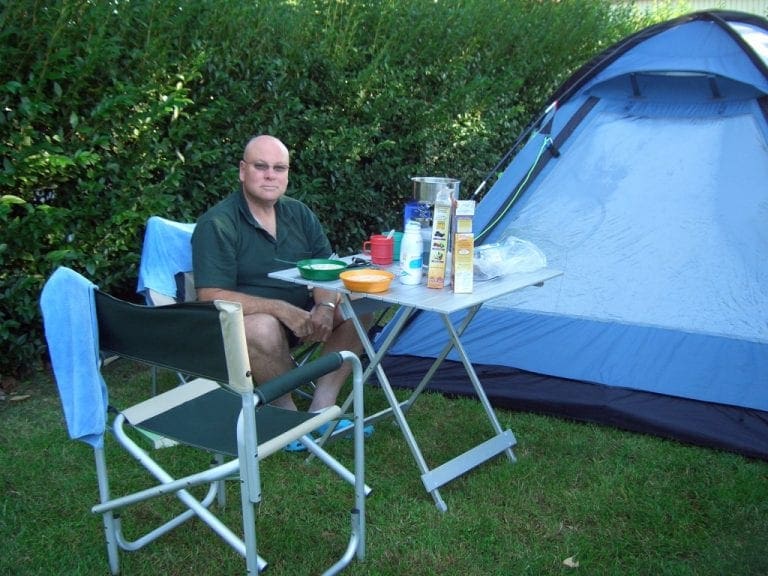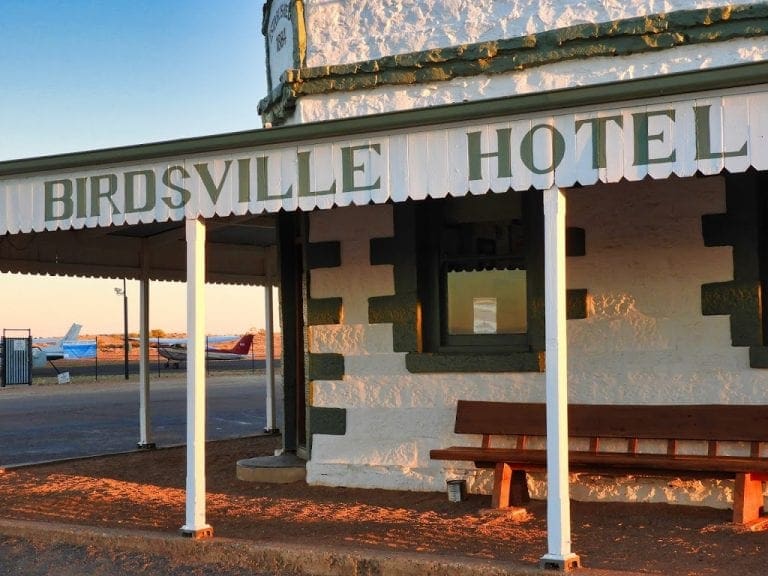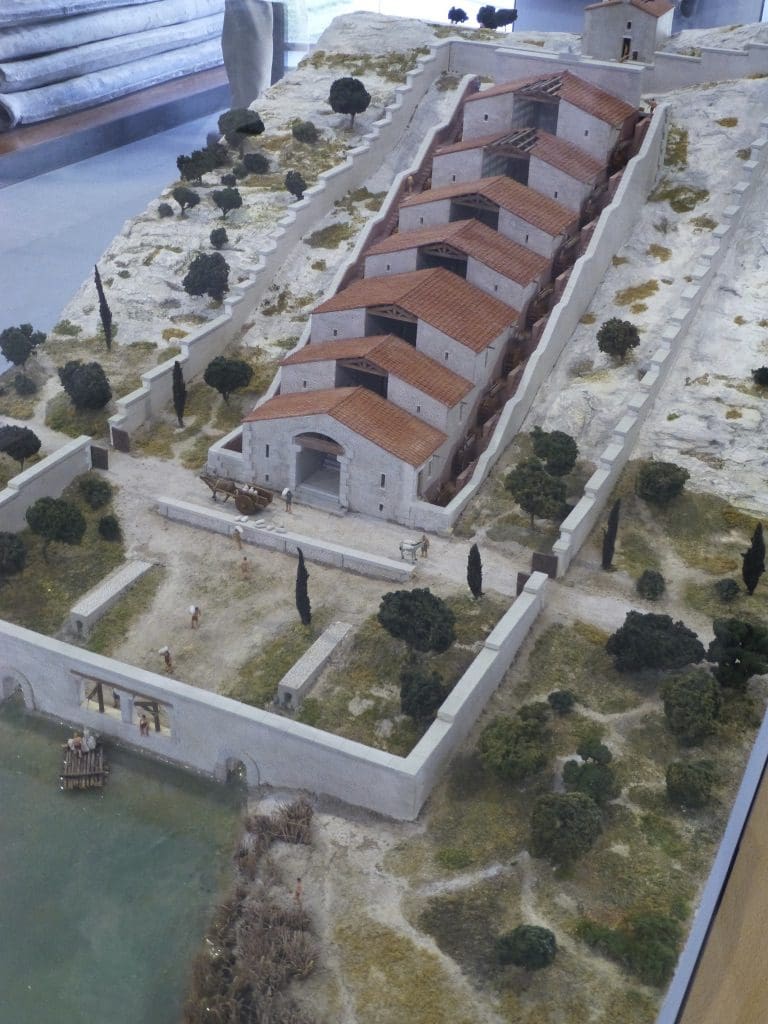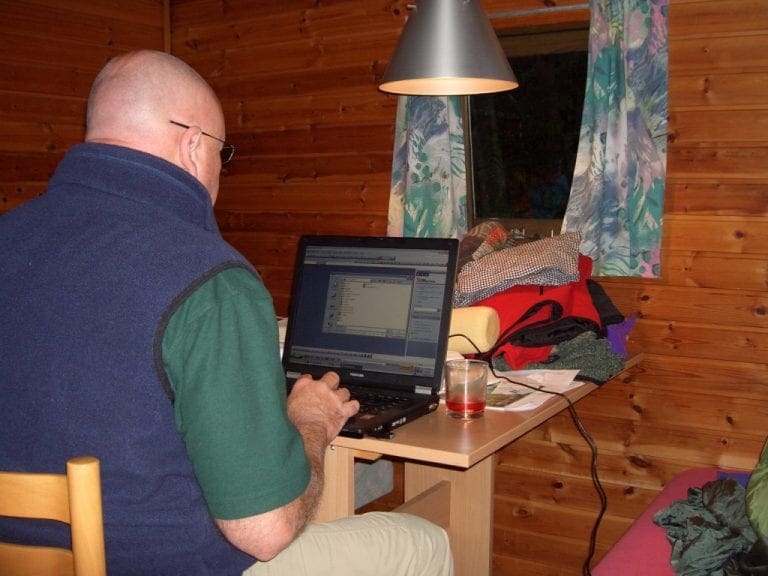Queensland Road trip 2014 – first
This road trip is partly to celebrate Helen’s mother’s 101st birthday, partly a desire to see more of far western Queensland and partly a desire for a road trip. We have the two cats (Zazu who is 19 and Neeka who is round). We are towing our Avan with our Nissan Xtrail. At times, it gets a little cosy with 2 humans and 2 cats (with their litter tray) in our tiny Avan. Zazu travels on the passengers lap and Neeka travels in her cage.
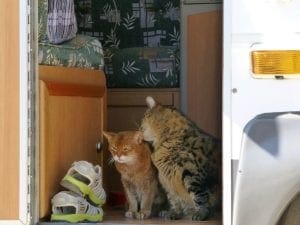

Wednesday 16 April 2014. Drove 323km to Quirindi. We got away at 10:45am after 5 days of fairly frantic effort. We came back from New Zealand only 2 weeks ago and only decided to do the road trip on Friday. Always a bit strange settling into the road trip routine and we were tripping over each other and the cats for a while. The cats did ok, but I think 300+ km is too far in a day for them. They don’t get enough sleep while we are driving, they don’t eat or drink. It knocks them around. Zazu did very well. Neeka embarrassed herself with a piss in her cage – we will have to pay more attention. Quirindi Van Park gave us a discount for each cat. Quirindi has a very good little van park – clean and well looked after. Not many spaces and as full tonight as I have seen it. A chilly night with a clear sky. Very crowded on the bed with us and cats all trying for warmth.

Thursday 17 April 2014. Drove 279 km to Moree. I do like the road that runs from Quirindi through Gunnedah and Narrabri to Moree. What rich farming country! We stopped several times to check on the cats and gave them a walk at Narrabri. At Moree, we are at the Mehi River Van Park. We have stayed here a few times before. Another good place. Huge flocks of galahs wheeling around just on dusk. I spent a little while in the Van Park’s 41C spa. We read and spent a bit time getting the van contents sorted so we are not so cluttered. A bit of shopping to get us through Easter which begins tomorrow. A bit of a rethink of the trip north to keep each day less than 300km. You can’t do too many things or do things to a tight time table when you travel with cats.
Friday 18 April 2014. A day off not doing too much. We visited the spa pools at Moree. Very nice – lovely and warm with a good cool pool. Quite a few visitors in town for Easter. It is hard not to compare Moree Hot Spa with Hanmer Spring in NZ – we were there very recently. Moree has fewer pools – yet the rest is much the same. After the big effort of hot pools in the morning, we read and I had a sleep in the afternoon. Neeka has taken to sleeping in the washing-up basin. They both like to sit in the open doorway looking out at what is happening. We make certain Neeka is on her lead when she is out – she likes to go for a very short walk of exploration around the car and van. Zazu is ok without the lead – she likes her walk but does not go far. Where we are at our end of the park, all of the women have seen and admired the cats.
Saturday 19 April. Drove 239 km to St George. An excellent van park at St George – Pelican Rest. Excellent amenities and extremely clean. (Ferocious sandflies!) St George itself was well shut down for Easter weekend with a rodeo in the showground. A bit of a surprise today when Zazu pissed in my lap while Helen was driving. Zazu appeared to be asleep at the time – Alzheimer’s Cat. We have had to have a major rethink. We should not drive more than 200km a day. Zazu does sleep in the car but not enough and she really crashes for the afternoon. She and we also need days off when we do not move. Good natured, complying Neeka just puts up with it all – and she is the one in the cage.
Sunday 20 April 2014. Drove 287 km. 11C overnight followed by a hot 30C day. A longer day than expected. We drove first to Roma, expecting to stay at the Big Rig where we had stayed last trip. No chance. Roma has been taken over by gas explorers. (Actually on Easter Sunday, Roma is empty of people and locked – but you get the idea.) Every conceivable accommodation is booked; the tiny Roma airport has row upon row of FIFO vehicles waiting for employees to return and claim them. We drove on to Injune – not the best experience in the world. By then the cats were exhausted with the hot and long day. When I rang Injune van park, I was told ‘We don’t take bookings. Park where you can. Click!’ When we turned up, the office was locked and Helen was abused by the manager for asking where we should park. Injune has also been overcome by gas. I’m not going to say many nice things about Injune; which is a shame because last time we came though, we thought it a nice town. No need to be rude. We have been on the road only a few days and are already buggered.
Monday 21 April 2014. Drove 244km to Springsure. A much better day – nowhere near as stressful as yesterday. 244 km was about 2 1/2 hours driving – which turned out to be just 5 mins too long for Zazu, who pissed on the seat while I was booking into the van park. We had stopped several times for her to have a piss along the way – but you know the old saying ‘you can lead a cat to her litter tray but you cannot make her piss’. We are at the Springsure Roadhouse and Cara park. Quite pleasant. The road from Injune goes north for 172 km (passed the turnoff to Carnarvon Gorge) to Rollestone. In my opinion the country looks as good as it gets – tall green grass everywhere. The section around Carnarvon looks especially nice. North of Carnarvon the plains begin. Around about Carnarvon is one of only two places in Oz (I think) where a watershed has water go three ways: east to the Pacific; south to the Darling/Murray; and west to the Cooper/Lake Eyre. (The other is between Winton and Hughenden – where the water goes north to the Gulf; east to Pacific and west to Diamantina/Lake Eyre.) A bit of a sit around and chat with the neighbours tonight. Country & western singers.
Tuesday 22 April 2014. Drove 120km to Capella. A very pleasant drive. Stopped at Emerald to restock after Easter. Misjudged Zazu’s need to piss (again) and got another lap full. We plan to stay at Capella for a couple of nights. A very nice van park where we have stayed before. I’m not to sure what appeals. Very clean, very friendly and caring. We’ve been given a site with a permanent awning – which does make things a bit easier.
Wednesday 23 April 2014. A much needed day off in Capella. Capella is certainly a shadow of its former self. When we came through here a few years ago, there were a couple of big coal mines nearby and Capella was a bustling town with far more people than accommodation. Since then, those mines have closed and all the accommodation is empty, vacant, derelict. Capella is shrinking to a ghost town. The Capella van park has a ‘happy hour’ every day – 4:30 onwards. On the two days we were here, this happy hour consisted of 8 locals (residents) standing around until they had finished the 12 cans of beer each had brought for the night. A male pissing competition with its conversation made up entirely of put downs and humiliation. Not very interesting.
Thursday 24 April 2014. Drove 220km to Belyando Crossing – which would have to be one of the least inspiring places (dry, barren, on the top of a slight rise, ants, no water and rude surly manager). The only saving grace would be the families of owlet nightjars that began calling on dark, and a few dingos. Quite a nice drive from Capella through Claremont. Below Claremont, the country is looking very good. North of Claremont, it becomes progressively drier. From what I remember from my Biogeography classes (many years ago), all this stretch from Roma north is what is called ‘The Queensland Desert’. Good one year in ten. Stocking rate about one snake to the acre. We have driven through the results of that one good year. This is ‘Road Train Country’ with trains up to 4 long (55 metres). This year, they are mostly carrying cattle south (to better feed) and returning empty for another load. I understand that the whole of the Gulf Country is in drought – even if they have grass, they don’t have water – and usually they have neither. (I find this interesting. The area around here had several weeks of light rain that did not flow or fill dams and water courses. It just grew tall grass. So the country looks good, but cannot support any stock.) Cattle are dying up there, so the stronger ones are brought south to better feed. We’ve seen one such mob of about 1,000 head feeding in ‘long paddock’ roadside verge. Oh, Zazu did piss in the car today (she appears to have taken a reluctance to piss in her tray). However, this time, Helen’s piss proof contraption has saved the day and just a towel got wet. Getting better. I finished reading Thomas Keneally’s ‘The Daughters of Mars’ a truly excellent book.
Belyando Cross is selling unleaded fuel at $2 per litre and restring vehicles to just 15 litres ($30).
The ants at Belyando Crossing proved to be very vexing. Small black ferocious busy ants that got into almost everything. Absence of water also made this a very trying camp place. NOT recommended. Do not plan to stay at Belyando Crossing unless you are compelled to do so. Horrible.
Friday 25 April 2014. Drove 200km to Charters Towers where we are staying in the Dalrymple Tourist Van Park. We have stayed here a few times before. It is an excellent grassy cool oasis on the northern side of Charters Towns beside the golf course.
Saturday 26 April 2014. Day off in Charters Towers – shopping, reading and doing not much. I visited the Family History Library here (my Great Grand father died here, my grandfather was born and died here, my father was born here). At the end of the 1800s, Charters Towers was the second largest city in Queensland (called ‘The World’ by the locals because it had everything man and woman could want. It had its very own stock exchange. Several suburbs – Millchester, Queenton, Mosman Park, Lissner, Richmond Hill. Each as import and distinct as Redfern, Glebe, Newtown in Sydney today.) Today, Charters Towers is a small shadow of its former self – and contracting. Townsville (the port that was initially established to service the huge demands of Charters Towers) has eclipsed it and is taking most of the growth in the region. Townsville is just over an hour’s drive away- so, Charters Towers has now become a shrinking satellite town to the growing City of Townsville.
We had a good chat with the owner of the park. Two interesting things. He has found that ‘entertainers’ drive away his customers. In this park there is a large covered ‘eating area’ with an open fire attached. During the season (ANZAC Day to September) he feeds up to 80 people a night and people sit and chat at tables for 6. If he has an entertainer, people can’t chat and after the first time don’t want to hear the same gig night after night. They break long bookings, complain and move on. Many people come here just for that 5 month season. He averages 10 nights per site without an entertainer and 4 nights per site with one. Apparently, ‘entertainers’ ring daily/weekly to get a gig here for the season and he turns them away. Entertainers would send him broke.
The second point was about old blokes on a mission. He gets several people a year who he does his best to persuade to not drive on. They are grey, and clearly very ill, yet insist that they have to drive to some spot by some time to do something. Many spend their time in Charters Towers in hospital and then want to jump in the car again and complete their ‘mission’. He finds it a very hard part of the job but thinks has saved a few lives.
Sunday 27 April. Another day off in Charters Towers. We went for a walk down to the local market which looked to owned by residents of the old aged home (Eventide) across the road. Eventide is another relict of Charters Towers hey-day. As are the huge schools here. Charters Towers was said to have to best climate for education in Australia (or the world). Summers do not get too hot (in the 30sC), mild winter (14C is very cold night and is rare), low humidity and no cyclones. Large boarding schools were built here (and still exist). For those same reasons, it was seen as a good place to which to retire. Hence, the very large ‘Eventide’ retirement village. But what else is now here? Not much. Charters Towers is an empty shell of what was once a great city in North Queensland. Although it does have an enviable climate, it would be a very boring place to live.
A comment about our fellow travellers. Most of the men are obese – devoting considerable effort to cultivation of their vast stomachs, usually by pouring considerable quantities of beer down their necks and drinking themselves senseless each night. Petty tyrants. Most of the women are thin, mousy and apparently compliant to the dominant males.
Monday 28 April. Another day at Charters Towers. It is so nice at the Dalrymple Van Park that we stayed an extra night. Today, we did a tour of the Venus Stamping Mill. This stamped (pounded) the ore from Charters Towers to extract the gold. It was in operation from 1872 (within weeks of gold being discovered) for over 100 years. I suspect that the mill owners made more money than the gold diggers. A big corrugated iron shed with 35 stamping hammers. The noise would have been intense. Plus the fumes of mercury that was used to extract the gold probably sent most of the mill workers insane. (Not just mad hatters, but mad mill workers.) All the original timber is still standing in this termite infested country – probably because the timber became infused with mercury.
Tuesday 29 April. We drove 22 km to Bivouac Junction Holiday Park on the banks of the Burdekin River. A nice park with a huge variety of birds plus chooks, peacocks and roos. We intend to stay a couple of nights here before heading to Ayr on Thursday. We’ve had a change of plan for the return trip. Zazu’s pissing is causing too much stress. We’ve decided to abandon the plan for a return via Windorah and Quilpie. Still deciding. We are torn a bit. We know that we can do Ayr to Sydney in 3 days – that would knock us and the cats around. Zazu appears to suffer if we travel more than 2-3 hours. We might try steps of 350km followed by 2-3 days rest.

